

Room Acoustics: What Installers Need to Know - CE Pro Magazine Article from CE Pro. For decades, audiophiles have searched for the Holy Grail of sound.

During this time most of their efforts have focused on equipment changes. They swap out amplifiers, cables, turntables, CD players, loudspeakers and more - and many of them are still on their quest. Kelly Donnelly, owner and engineer of Studio Plush, a recording studio in Austin, Texas, points out that room acoustics have a great effect on audio performance in the home, perhaps even more so than equipment choices. Close (and seal) the doors. Can music learn from the slow-food movement? This past summer, Zenph Sound Innovations had a problem.
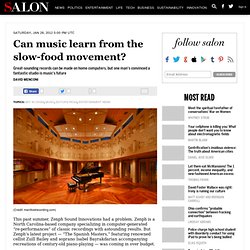
Acoustic Treatment and Design for Recording Studios and Listenin. Acoustic Treatment and Design for Recording Studios and Listening Rooms by Ethan Winer Ethan Winer is co-owner of RealTraps, a leading manufacturer of acoustic treatment products.
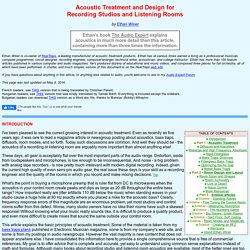
Ethan has at various times earned a living as a professional musician, computer programmer, circuit designer, recording engineer, composer/arranger, technical writer, acoustician, and college instructor. Ethan has more than 150 feature articles published in various computer and audio magazines. He’s produced dozens of educational and music videos, and composed three pieces for full orchestra, all of which have been performed.
If you have questions about anything in this article, or anything else related to audio, you're welcome to ask in my Audio Expert Forum. Audio Accessories. Audio & Video Wall Plates for Mic XLR, Guitar, Speakers, MIDI & BNC: Gigcables.com. Prime 29 Diffuser Build - Using QRDude. OK, now on to the cutting.
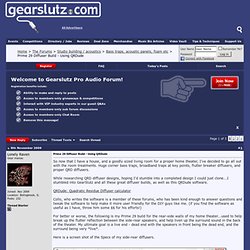
The Recording Studio Design Page. Non-commercial site accessing theory, drawings, data, and a small Dos basic program for those interested in building a new studio or retrofitting an existing facility.
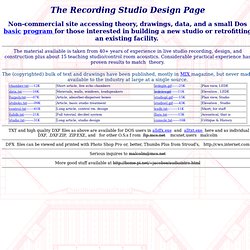
The material available is taken from 40+ years of experience in live studio recording, design, and construction plus about 15 teaching studio/control room acoustics. Considerable practical experience has proven results to match theory. The (copyrighted) bulk of text and drawings have been published, mostly in MIX magazine, but never made available to the industry at large at a single source. TXT and high quality DXF files as above are available for DOS users in alldfx.exe and alltxt.exe here and as individual DXF, .DXF.ZIP, ZIP.EXE, and for other O.S.s f rom ftp.mcs.net mcsnet.users malcolm.
Patchbays. Of the technical queries received at Sound On Sound, many fall into the 'hardy perennial' category.
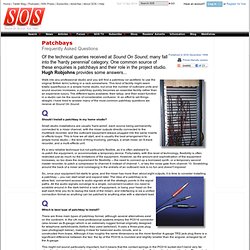
One common source of these enquiries is patchbays and their role in the project studio. Hugh Robjohns provides some answers... Walk into any professional studio and you will find a patchbay (or jackfield, to use the original British term) lurking in a rack somewhere. This kind of facility might seem totally superfluous in a simple home studio, but once the number of outboard units and sound sources increases, a patchbay quickly becomes an essential facility rather than an expensive luxury. Acoustic Treatment and Design for Recording Studios and Listening Rooms. JH Brandt - Recording Studio Design & Acoustics Home. Wall behind the Loudspeaker Cancellation.
The mechanism of cancellation is very simple.

When two identical signals are in anti-phase (180 degrees out of phase), they cancel each other. If the loudspeaker is a quarter wavelength away from a reflective wall, the reflected wave comes back to the loudspeaker in anti-phase (phase difference of half a cycle, see Figure 1) and thus cancels the original signal at that frequency. How complete the cancellation is depends on the distance and the reflection coefficient of the wall.
Longer distance means that the amplitude of the reflected signal is lower and thus the cancellation is not complete. Room response controls. Room Response Controls Bass Roll-OffBass TiltTreble Tilt or Roll-OffBass LevelMidrange LevelTreble Level To make the monitor work exactly right Genelec monitor systems provide versatile room response controls.
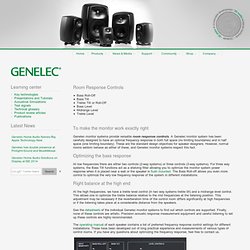
A Genelec monitor system has been carefully designed to have an optimal frequency response in both full space (no limiting boundaries) and in half space (one limiting boundary). These are the standard design objectives for speaker designers. Optimizing the bass response. Flush mounting to wall. Flush Mounting to Wall flush-mounting minimizes diffractionseliminates back wall reflectionboosts speaker outputremoves the front baffle effectlow frequency room resonances need to be attenuated Implementing half space An enclosed dynamic loudspeaker drive unit has theoretically ideal working conditions only if its radiation space is either a full space (spherical radiation) or a half space (hemi-spherical radiation).

To achieve ideal full space conditions the drive unit and the enclosure must be small compared to the radiated wavelength. In practice the radiation angle will decrease at higher frequencies because of the finite front baffle size of the speaker cabinet and finally because of finite size of the drive unit itself. The half space loading generated by the front baffle is far from ideal. Frequency response dip caused by a reflection. Placing Loudspeakers correctly in Control Rooms. Placing Loudspeakers correctly in Control Rooms consider the loudspeaker radiation spacewall reflections change the frequency responsefollow the free-standing placement recommendationsexact symmetry produces accurate sound stage imagingangle the loudspeakers towards the listenerheight and width matters in TV/film monitoringbattle room modes The loudspeaker Radiation Space An enclosed dynamic loudspeaker drive unit has theoretically ideal working conditions only if its frontal radiation space is either a full or a half space (i.e. spherical or hemi-spherical radiation).

Studio Acoustics. Yamaha - Global. ASC Quick Sound Field for Control Room and Mix Environments.